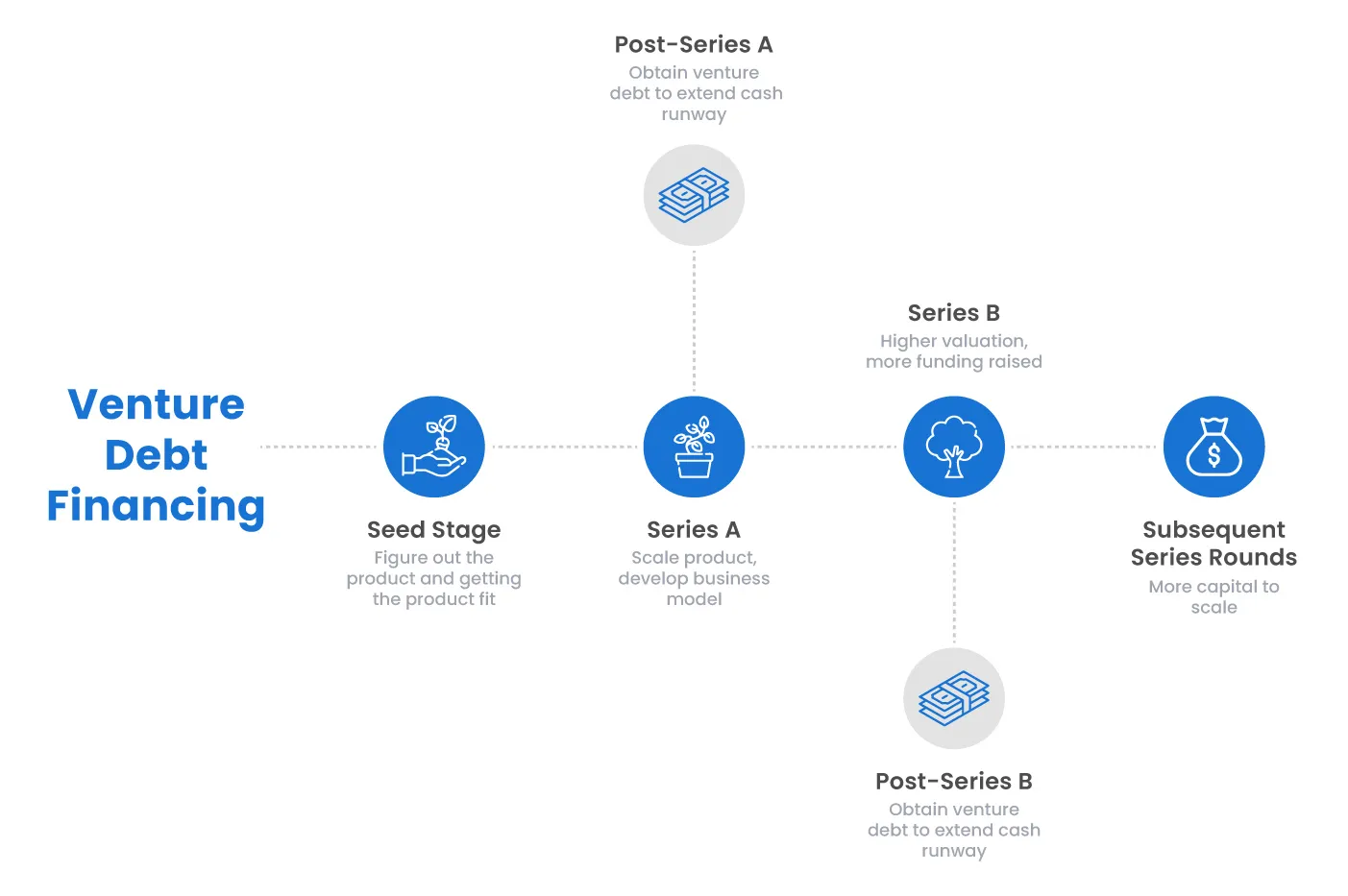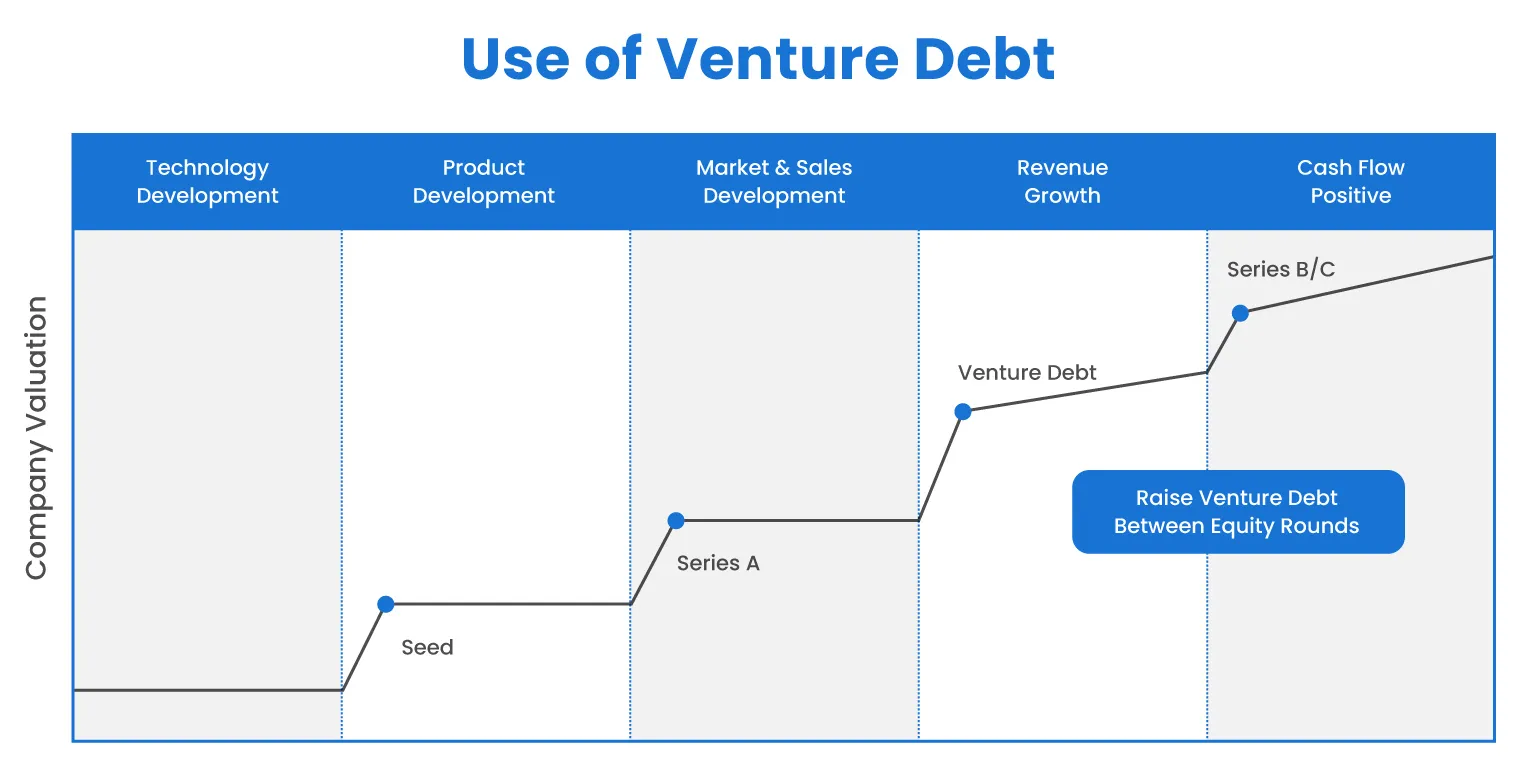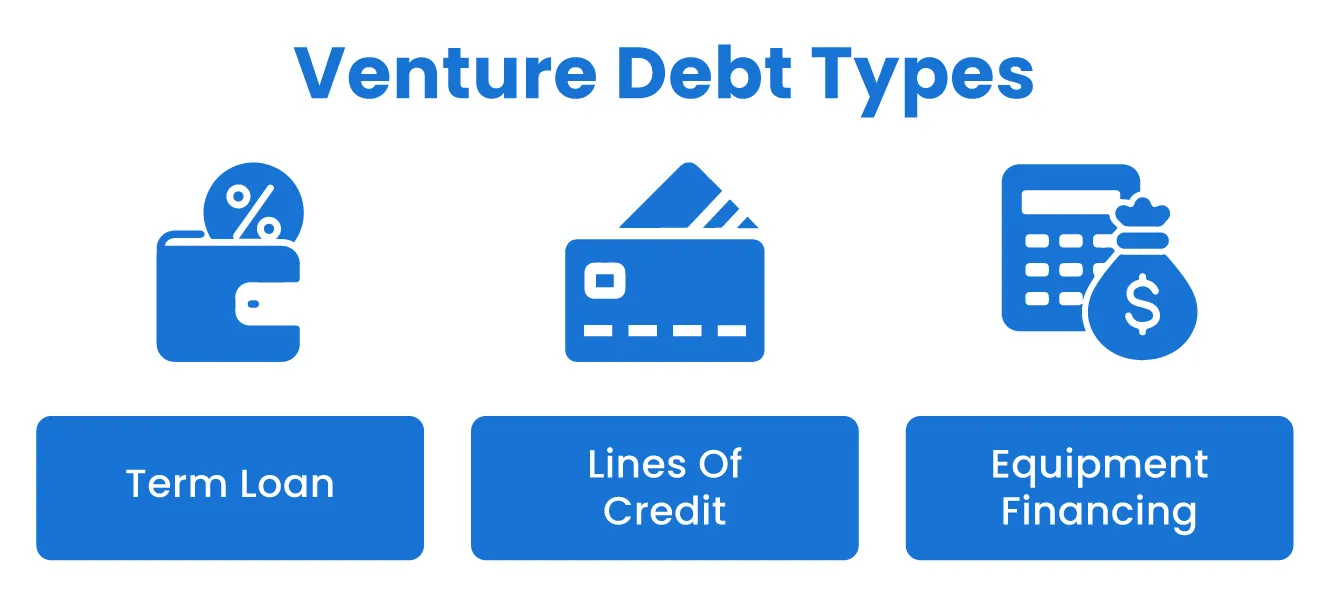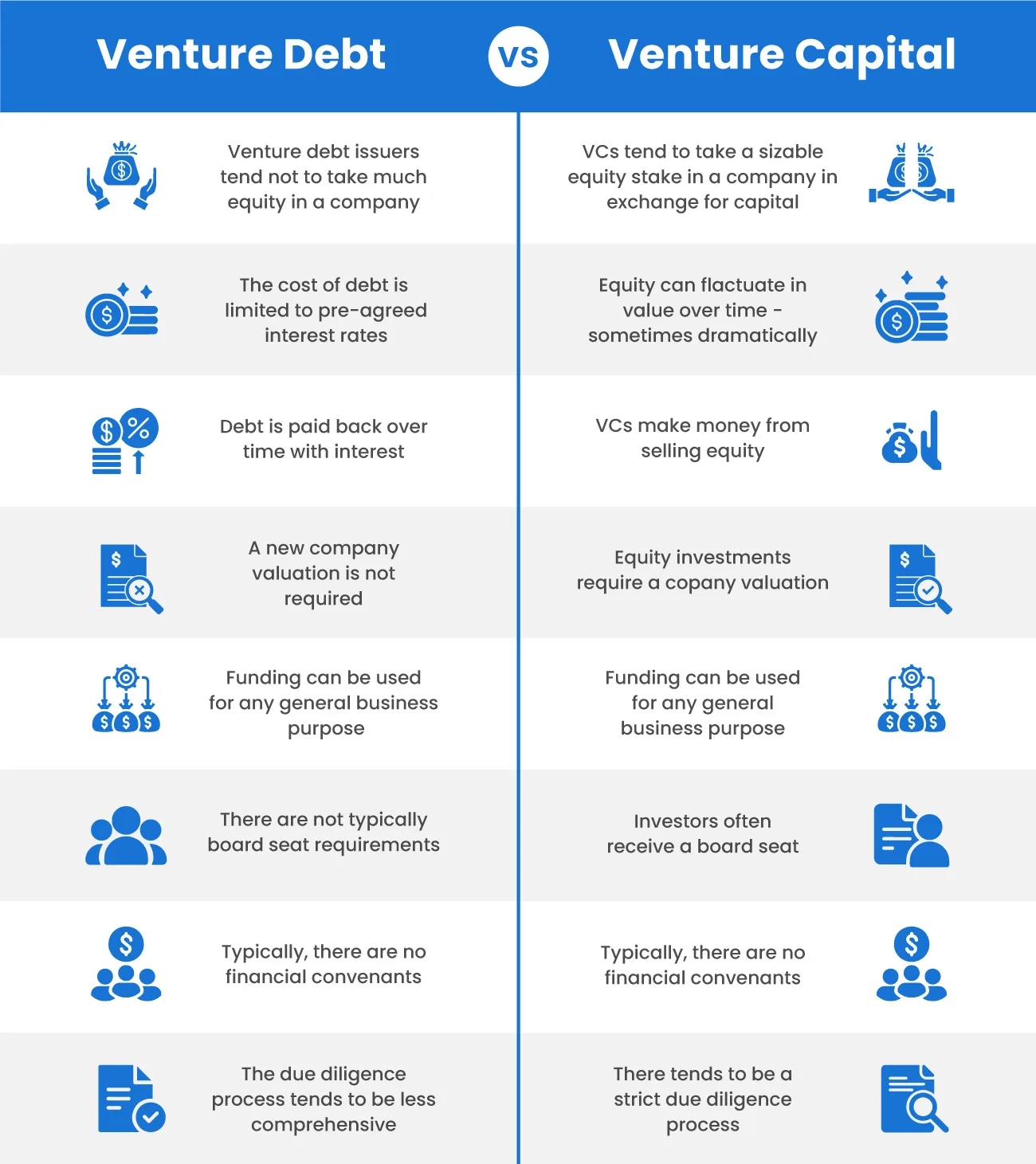Venture Debt: A Guide to Venture Debt Financing (2025)


Mature companies are not the only ones increasingly turning to debt to finance their growth needs.
In 2022, as venture capital investments began to wane after a 10-year bull run, venture debt picked up the slack, with US venture-backed tech firms marking a new annual record with over $29 billion in financing. What better time to get an understanding of the phenomenon.
DealRoom plays a regular host to many startup fundraising processes and this is our guide to venture debt financing.
What is Venture Debt?
Venture debt is a debt financing specifically designed for, and aimed at, early-stage, high-growth companies with venture capital backing.
The past ten years have seen a surge in this form of financing owing to the historically cheap debt that has been available. A large majority of VC-backed companies raise venture debt between funding rounds and pre-IPO, often turning to banks that specialize in venture debt, or the VC firms that backed them in the first place.

Understanding Venture Debt
Venture debt and venture capital are two forms of financing used by early-stage, high-growth companies.
They are analogous to the debt and equity financing used by more mature companies, and share many of the same benefits and drawbacks (more of which below).
Venture debt usually isn’t an alternative to venture capital so much as an additional form of capital raising: Firms at all stages of their cycle take on at least some debt.
Venture debt is structured somewhat differently to traditional debt in that venture debt providers tend to look to the young company’s last funding round in addition to its financial results. VC firms usually provide capital with lots of terms and conditions attached, including rights about the seniority of assets in the case of a liquidation, so venture debt leaders will want to see where they stand.

As a rule, they tend to fund startups to the somewhere between 20% and 40% of the most recent VC raise.
There is an almost symbiotic relationship between venture capital and venture debt.
For example, venture debt lenders seldom, if ever, provide debt financing to companies that haven’t received raised at least some venture capital. Venture capital acts as a validator for the lenders.
It tells them that significant venture capital due diligence has been conducted (and passed). It also lets them know that experienced industry professionals are overseeing the young company’s development, suggesting that they’re likely to get their money back.
Outside of this, many of the usual concepts around lending apply to venture debt.
For example, the rates and terms given to young companies by venture debt providers will depend on the default risk that the venture debt provider perceives, the conditions of the market, and even the profile of the VC firm that has already invested. A blue chip VC firm often makes giving the green light on venture debt an easy decision.
And in case venture capital financing makes more sense for your startup's stage, check out our venture capital due diligence template and discover why DealRoom is one of the most important tools for successful due diligence process.

Types of Venture Debt and Their Uses

Broadly speaking, there are three forms of venture debt. Each is outlined below, along with its typical uses:
Term loan
This is the most common form of loan, and mimics the repayment structure used by banks and other financial institutions when lending to more mature companies. With venture debt, the interest rates are always higher (much higher). These are typically used for expansion.
Lines of credit
Cash flow can be an issue even for young companies that have received VC funding. A line of credit provided by a venture debt lender can be used for short-term assets such as inventory or to fund working capital expenses, which can grow faster than cash flows.
Equipment financing
Most equipment is actually purchased by VC firms - think of Peter Thiel providing VC money to an early Facebook to acquire computers, for example - but in cases where more is required, venture debt funding can provide an option. This is usually reserved for startups which are more capital intensive.
Venture Debt Financing Process
The good news for startups that have already raised venture capital is that raising venture debt is much less difficult.
For a start, you should be able to leverage the expert advice and industry network of your compay’s VC backers. They’ll have been expecting a point at which you need to raise financing, and should be able to provide you with some pointers.

The proven way of being successful at venture debt financing is as follows:
1. Have a clear plan
Know why you’re raising venture debt, and ensure that the answer is compelling (as we always say, there should be a good ‘why’). This should be discussed in tandem with the company’s VC investors.
2. Return to the VDR
The data room used to obtain VC funding is your best friend in venture debt raising. It outlines your company’s business plan, its financials, and its progress to date. Use it and update it where necessary so that it sells your company well.
3. Make your pitch
Talk to several venture debt lenders rather than one. Discuss repayment options, covenants, and other terms. Again, this should be relatively straightforward for any startup that has gone through the arduous process of raising VC money.
4. Assess costs
A data room can assist startups in making sense of all the offers they’ve received from venture debt lenders. Even four or five different term sheets can become unmanageable left in email. Share with VC backers, and get their expert opinions on the best options to take.
5. Sign terms
Assuming there is an attractive offer on the table, it now behoves the startup company to accept the deal, signing the terms, and receiving the debt payment.
Repayment: The repayment occurs according to the terms agreed with the lender.
Venture Debt Lenders
There is a growing number of venture debt lenders, as witnessed by the record levels of venture debt raised by Silicon Valley firms. The years ahead, with higher interest rates, may test some of their business models (and those of the borrowers), but for now, at the outset of 2023, most of these companies are in rude health. The most well-known venture debt lenders in the United States are:
1. Mercury
The most famous of the pack was founded by VC firms who recognized the need for a venture debt company with VC insights. As a result, Mercury often partners with famous VC investors such as Founders’ Fund and Tribe Capital.
2. Global Growth Capital
A UK-based firm that provides equity, venture debt, and real estate funding. Global Growth Capital specializes in fintech lending, giving them access to more liquid businesses than usual.
3. Bridge Bank
A Bay Area bank which found its way into venture debt mostly by virtue of being located close to Silicon Valley. The company was acquired in 2015 by Western Alliance Bancorporation, enabling it to tap into a much larger cash pool for its lending.
Determinants of the Venture Lending Decision
The determinants of the venture lending decision mirror those of regular debt lending decisions.
In both cases, the aim of the lender is to receive a return on the amount loaned. As stated above, the difference with venture debt is the maturity (and by extension, the risk) of the company being loaned to.
That being said, the most common determinants for a venture lending decision are:
- Company’s performance to date (growth, financial results, etc.)
- Company’s venture capital raised to date
- Company’s VC bankers (higher profile is usually better).
- Assessment of the company’s own founders
- Terms being sought by the company
Advantages and Disadvantages of Venture Debt
Advantages:
- Venture debt is easier to obtain than venture capital.
- Debt tends to be cheaper than equity (even for startups).
- There’s a growing pool of venture debt providers to pitch to.
- Venture debt means founders don’t have to give up any more control.
Disadvantages:
- Lenders know that the money is urgent and often offer terms that reflect this.
- For companies with high cash burn, venture debt is more risky.
- Interest rates are rising, so terms on venture debt aren’t going to be as attractive.
- Lenders often seek personal guarantees from the startup founders.
Who Should Seek Venture Debt Financing?
Venture debt financing is for those companies that are growing quickly, and can see a time horizon in which the debt can make a contribution to that growth, and can be repaid without placing undue stress on the business.
This usually means companies between funding rounds that cannot justify a second funding round so close to the first, but have earmarked the capital raised during the equity round for other purposes (e.g. for short-term working capital needs).
Comparing Venture Debt to Venture Capital
While equity is long-term capital (i.e. the VC investors are going to be with you for the mid-term at least), venture debt can be short-term or long-term capital.
So not only is venture debt cheaper than venture capital, it is also more flexible.

As mentioned above, companies can rarely raise venture debt having not raised venture capital first. In this respect, venture debt can almost be viewed as a way to ‘top up’ the capital achieved during a venture capital raise.
DealRoom and the Venture Debt Financing Process
A thorough due diligence process is common to all venture debt capital raises. This is an area where DealRoom has extensive experience of helping startups achieve their goals.

Pax8, a highly successful tech distributor started in 2012, which came to DealRoom with the intention of raising venture debt, having already gone through several VC funding rounds.
As the Pax8 fundraising case study outlines, DealRoom significantly streamlined the process for the Pax8 team, making their capital raise a completely seamless process.


Pax8, a highly successful tech distributor started in 2012, which came to DealRoom with the intention of raising venture debt, having already gone through several VC funding rounds.
Get your M&A process in order. Use DealRoom as a single source of truth and align your team.




.webp)



.png)
.png)
.png)
.svg)

.svg)
.png)


